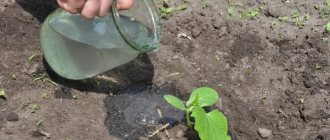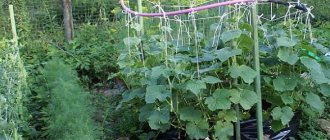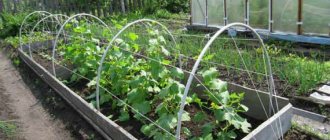How to choose a variety
Radish is a unique crop. Thanks to its frost resistance and early ripening, the crop can be harvested up to five times per season. Vegetable connoisseurs plant it even in winter - in a greenhouse or in a container on a windowsill.
Breeders have developed varieties for different growing conditions. I will list some of them:
- for indoor conditions - Richard, Hussar, Carmen, Liman, Kamelot;
- for the greenhouse - Varta, Saksa, 18 days, Heat, Deca;
- ultra-early and early for spring and autumn sowing - Pervonets F1, Rondar F1, Mila, Rova, French Breakfast;
- mid-season with resistance to short frosts and heat - Alba, Wützburg 59, Autumn Giant;
- late ones for long-term storage - Red Giant, Ice Icicle, Dungansky 12/8.
Depending on the variety, root vegetables are round or oblong in shape, weighing from 20 to 200 g, with a slightly spicy or neutral-sweet taste. The color can be white, red, yellow, purple or green. The article on radish varieties provides detailed descriptions of the most popular of them.
When to sow radishes
Radishes can withstand frosts down to -4 degrees Celsius, an adult plant - up to -8. The most delicious fruits are obtained when it grows at a temperature of +16... +20. If the thermometer rises higher, the tops begin to stretch and the fruits do not receive enough nutrients. Below +11 growth stops.
Thus, the best time to grow radishes is in the spring or August-September. This is the optimal time both in terms of temperature and daylight hours. The classic date for the first planting is the second half of April. In the south it moves towards the end of March, in the north – towards the beginning of May. Early varieties ripen on average in three weeks, so you can harvest twice in the spring.
If you do not plan to grow radishes in the summer-autumn period, after harvesting the spring harvest, plant tomatoes or eggplants in the same bed. They have no common pests with radishes, so they will grow comfortably in such soil.
At the end of May and June, radishes are not planted - due to the heat and long daylight hours, they go into the arrow. Summer plantings begin at the end of July. Preference is given to mid-season and late varieties - they will begin to set fruit just when the heat subsides. The harvest will be ripe by the end of summer or beginning of autumn. The next batch can be planted at this time, weather permitting.
Radishes are planted before winter at the junction of October and November, when the air temperature is stable and ranges from 0 to +5. Select varieties that are resistant to frost, low light and flowering. The bed must be protected from the abundance of melt water. Pre-winter sowing allows you to get a spring harvest three weeks earlier than usual.
Landing dates
After sowing the seeds, the first radish harvest can be obtained within a month, and some ultra-early varieties ripen even faster, in 20 days. This makes it possible to plant radishes not only in early spring, but throughout the year if there is a warm greenhouse. It all depends on when you need to get the harvest.
In general, you can plant radishes:
- in spring;
- in summer;
- before winter;
- in winter.
The optimal temperature for the growth and formation of radish fruits is from 15 to 20 degrees Celsius (the plant can withstand short-term frosts up to 3 degrees below zero).
How to prepare radishes for planting
To make radishes tasty and juicy, be sure to take into account the rules of crop rotation and the soil requirements of the crop. It is also important to properly prepare the seeds. The plant is not capricious, so there will not be any special difficulties.
Crop rotation rules
The main rule of crop rotation is not to plant related crops one after another. Otherwise, pests and diseases will be inherited. Radishes are a type of radish and together they belong to the Cruciferous family. This also includes cabbage, rutabaga, turnips, watercress and mustard. All these crops are re-sown in their original place no earlier than after 3-4 years.
Radishes grow well after cucumbers, pumpkins, tomatoes, potatoes, zucchini and peas. For neighbors, choose garlic, onions, spinach, legumes, carrots, tomatoes and cucumbers. The video describes in detail which crops radishes feel comfortable next to.
Preparing the soil for the garden bed
Radishes love loose loam with a neutral reaction of 7-7.4 pH. It’s easy to determine the acidity of the soil - just pour a spoonful of soda diluted with water into a handful of soil. Bubbles and hissing indicate a normal alkaline reaction. If they are not there, the soil needs to be deoxidized with dolomite flour or ground limestone. The first is suitable for sandy soil, the second for clayey soil.
On acidic soils, radishes are often affected by clubroot, a fungus that causes the fruit to become covered with ugly growths and rot.
If the soil requires fertilizing, add rotted compost or humus while digging. It's better to do this in the fall. Fresh organic matter is unacceptable - radishes do not tolerate it, they go into the feather and form fruits with voids.
After the snow melts, the area is dug up again 15-30 days before planting. It is very convenient to use a miracle shovel or a fork for digging the earth for this. Then the soil is fertilized with wood ash and compost and the bed is covered with polyethylene before sowing. During this time, the soil will have time to warm up well.
Radishes need sun in spring and autumn, and shade in summer. How to arrange this? The easiest way is to make beds in a lighted place, and when daylight hours lengthen, cover them with dark geofabric from 19 to 8 hours. Do not use film material - it will be too hot for the plant under it.
Preparing seeds for planting
Preparation of planting material includes the following steps:
- the seeds are sorted, removing all small and stunted grains;
- add 10 g of salt to a glass of water and pour it over the planting material, discard the floating grains;
- after washing, the seeds are soaked in clean water or a wet cloth for 24 hours, adding Zircon or another biostimulant if desired;
- dried and planted in open ground.
Some gardeners germinate grains before spring planting. But keep in mind that in this case the seeds’ frost resistance decreases.
Sowing dates by region
Correctly determined timing for sowing radishes is half the success in growing. The vegetable belongs to the “lovers” of short daylight hours, i.e. To grow root crops, it needs a short day of up to 10 hours a day and long-term shading. Otherwise, the vegetable will “delight” with nondescript flowers and small, hard, woody root vegetables.
Considering the high cold resistance of the plant and its ability to tolerate light frosts, it should be planted very early in the spring. At the time of planting, the soil should warm up to at least +2 degrees.
Germination time depends on air temperature and soil warming:
- up to +10 degrees – up to 2 weeks;
- +10…+15 degrees – up to a week;
- above +15 degrees – after 3 days.
Spring radishes are not intended for storage; they are consumed shortly after harvesting, so it is recommended to sow the seeds in new rows every week throughout the spring.
To choose the right time for planting radishes in open ground in the spring, you should take into account the climatic characteristics of the growing region. General planting times may vary from March to mid-May.
| Landing region | Sowing time |
| Middle lane, incl. Moscow region | From mid-April |
| Leningrad region | From the end of April |
| In the Urals, in Siberia | From the beginning of May |
| Southern regions | From mid-March |
The weather patterns of the current year are also assessed. If spring has arrived in the region ahead of schedule, you should not wait for the specified dates. The melted snow is a sure sign that it is time to plant radish seeds.
Schemes and methods of planting in open ground
There are two ways to plant radishes with seeds in open ground. The classic method is with grooves, the second is using egg cassettes.
Planting in furrows
This is the traditional planting of plants in rows. It is done according to the following scheme:
- on a loosened and leveled bed, furrows are made at a distance of 10-15 cm from each other;
- water the garden bed thoroughly - radishes will sprout better in moist soil;
- after the water is absorbed, the seeds are planted in the furrows every 5 cm;
- cover the top with soil and carefully compact the soil;
- Cover with film until the first shoots.
At what depth should radishes be planted? On average - 1-2 cm, but no more than 3 cm. Planting too deep will not allow healthy root crops to form.
Planting with egg cassettes
This method will speed up the planting process, and the plants themselves will be planted in an even, symmetrical pattern. The method is very simple:
- do the standard preparation of the bed - loosening, removing weeds, leveling the surface and watering;
- press the egg cassette into the ground so that clear indentations from the cells appear;
- one seed is planted in the formed holes;
- sprinkle with earth, compact and cover with film.
Cleaning and storage
Radishes do not ripen at the same time, so when asked when to dig up radishes, we answer: they need to be removed selectively, as they ripen. It is better to harvest radishes in the morning, watering the beds abundantly the night before. Having pulled out the root crops, shake off the remaining soil from them, cut the tops not just under the root crop, but at a distance of 2-3 cm from it, and do not cut off the roots at all. How long and how to store radishes?
From long-term storage, even in the best conditions, radishes become bitter and flabby, so give up plans to harvest this root vegetable, such as carrots or beets, especially since you can grow fresh juicy radishes at any time - not in the garden, but also in greenhouse The radish harvest harvested in the described manner is stored in plastic bags in the vegetable compartment of the refrigerator for about a week.
How to grow radishes in a greenhouse
If you plan to grow radishes in a greenhouse only in early spring, a film structure will be sufficient. For winter growing you need a polycarbonate greenhouse with heating. Be sure to provide a ventilation system.
They are planted in a film greenhouse already in March, when the air temperature inside reaches +12… +15 °C. You can sprinkle a thin layer of snow, and sow seeds on top and sprinkle with soil. Under the influence of greenhouse temperatures, the snow will melt and saturate the soil with moisture.
Don't forget to fertilize the soil in early spring. To do this, you need to dig it up to a depth of 10-12 cm and add humus. Otherwise, care for greenhouse radishes is standard. The main thing is to regularly ventilate the room.
Soil selection and preparation
Literally all gardeners sow radishes, but not everyone gets good results. Radishes grow well in light and nutritious soils, in beds not located in the shade of trees. And in order to improve heavy clay soils, you have to take care of this in the fall, or even for more than one year. During the autumn digging, 2–3 buckets of humus or peat and the same amount of sifted river sand are added per 1 m2 under the radishes.
You cannot apply fresh manure to the radishes: the foliage will be abundant and the root crops will not form. The best predecessors for radishes are cucumbers, tomatoes, carrots, and peas. You cannot plant radishes after any cruciferous vegetables: radishes, turnips, any types of cabbage.
In the spring, after the snow has melted, surface loosening is carried out on the site of the future radish bed with a rake (initially light, and later heavy). When the soil is ripe, use a garden fork to dig shallowly and add compost - two buckets per 1 m2. As the clods dry, they loosen and level the bed and at the same time add 30–40 g of ammonium nitrate per 1 m2.
How to grow radishes at home on a windowsill
With the right technology, radishes grow quite successfully in indoor conditions. Caring for a vegetable garden on a windowsill is a little more difficult, but if you follow the rules, you can enjoy fresh fruits all year round.
What to pay attention to.
- We remember that radishes do not like heat. Warm air from central heating can ruin all your hard work, resulting in tasteless and limp fruit. If your radiator does not have temperature control, it is better to move the radish boxes to a cool place and install a lighting system.
- For artificial lighting, use fluorescent lamps. Radishes are sown on a windowsill in natural light at the end of January if the windows are on the south side. If they face east or west - after February 10th.
- Don't forget to water and loosen the plant regularly.
Radish care
As I already said, radishes are an unpretentious crop. Basically it only requires moist and loose soil. Feeding is done as needed, sometimes they are not needed at all.
Watering rules
The optimal level of humidity is the key to the formation of tasty and juicy root vegetables. Excess water will cause the development of diseases and the appearance of cracks. Lack of liquid will make the radishes bitter and tough. To prevent this, follow simple rules:
- in normal weather conditions, water the beds once every three days, during drought - twice a day;
- watering time - early morning or late evening;
- water volume – 10 l per 1 sq. m, penetration depth into the soil is about 20 cm;
- at the stage of setting root crops, watering is especially important;
- Humidity changes are unacceptable.
Loosening, weeding and fertilizing
Radishes need light, weed-free soil. Therefore, after watering or rain, do not forget to loosen the soil and get rid of pest plants. This not only makes life easier for root crops, but also helps maintain moisture.
Ultra-ripe and early-ripening varieties do not need fertilizing. The fertilizers added to the soil at the digging stage will be enough for them. Mid-season and late radishes can be fed 1-2 times:
- at the stage of fruit formation - Agricola 4;
- after the appearance of 2-3 leaves - potassium fertilizer;
- Only overripe organic matter is allowed;
- It is better not to add nitrogen and phosphorus.
Prevention of diseases and pests
In the spring, diseases and pests rarely threaten radishes - it’s not the season. But as summer approaches, the risk of infection increases. Most often, the plant suffers from clubroot, an infection that deforms the fruit. Of the insects, the most harmful are aphids, slugs and cruciferous fleas.
How to protect your crop:
- follow the rules of crop rotation;
- at the seed preparation stage, disinfect them in a solution of potassium permanganate;
- buy varieties that are resistant to diseases and pests;
- do not allow the soil to become waterlogged.
Common Mistakes
Why do radishes disappear into the tops and shoots, and the fruits turn out tasteless, empty or small? Errors in cultivation lead to this result. Here are the most common ones:
- Dense landing. Sometimes gardeners sow seeds too close together. You can’t do this - the plant will start to bolt and go green. If you planted it too densely, thin it out, but do it very carefully. The best time for the procedure is a cloudy day after rain.
- Uneven and irregular watering. I talked about the rules of watering above. It is imperative to follow them - radishes are sensitive to humidity levels.
- Incorrect fertilization. If you overfeed radishes, the tops will suck all the juices out of the fruits and leave them small and empty. This is especially true for nitrogen and organic matter.
- Late collection. Radishes should be eaten young. Overripe fruits become hard and bitter.
When to harvest and how to store the crop
You should carefully inspect the beds and remove root crops as they ripen. This way you can ensure freer development of neighboring seedlings.
Harvesting is divided into 2-3 stages, in the first of which the largest vegetables are removed from the beds, and after a week the remaining root vegetables are to be harvested.
You need to remove the medium ones first, and then the small ones. It is recommended to water 2 hours before harvesting, this will make it much easier to pull out the radishes. After collecting the fruits, you need to get rid of the tops and shorten the tip, this will prevent their spoilage.
Store root vegetables in plastic bags, placing them in the vegetable compartment in the refrigerator. This method will ensure their preservation for several days, during which they should be used for food.+











